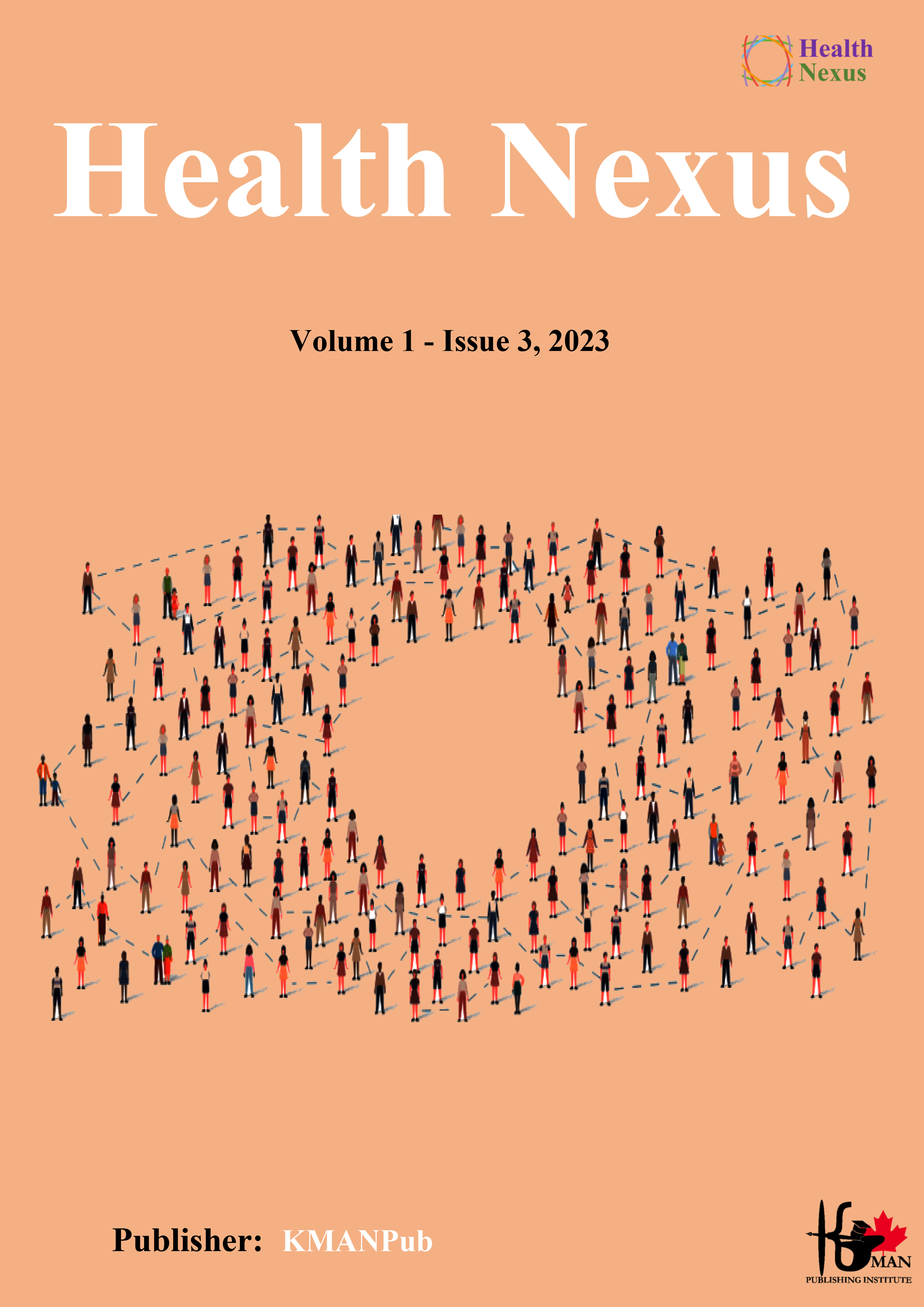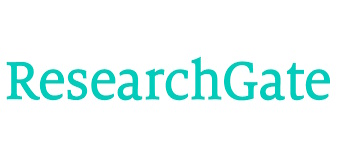Recent Advances in Biomechanics Research: Implications for Sports Performance and Injury Prevention
Keywords:
Biomechanics, Implications, Sports Performance, Injury PreventionAbstract
This narrative review provides a comprehensive examination of the latest advancements in biomechanics and their implications for sports performance enhancement and injury prevention. Utilizing systematic literature search methodologies, the review draws on peer-reviewed articles, conference proceedings, and comprehensive review papers published between 2019 and 2023, sourced from databases such as PubMed, Google Scholar, and ScienceDirect. This article synthesizes findings from these sources to outline critical developments in the field of sports biomechanics. The review focuses on several key areas: technological innovations in biomechanics, biomechanical analysis of sports movements, injury prevention strategies, and the integration of biomechanical research into practical athletic training. Additionally, the review highlights the current challenges and limitations within the field and proposes future directions for research and application. By categorizing and analyzing recent literature into thematic areas, this review offers a detailed and structured overview of the state-of-the-art in sports biomechanics, emphasizing its significant impact on optimizing sports performance and reducing injury risks. The findings and discussions presented in this review are intended to inform researchers, practitioners, and athletes, contributing to the enhancement of sports science practices and athlete safety.
Downloads
References
1. Taborri J, Keogh J, Kos A, Santuz A, Umek A, Urbanczyk C, et al. Sport biomechanics applications using inertial, force, and EMG sensors: A literature overview. Applied bionics and biomechanics. 2020;2020. [PMID: 32676126] [PMCID: PMC7330631] [DOI]
2. Ahmed I, Fine P. ‘Injury prevention versus performance’: has the time come to mandate the use of mouthguards in all contact sports? BMJ Open Sport—Exercise Medicine. 2021;7(1). [PMID: 33500783] [PMCID: PMC7812105] [DOI]
3. Shultz SJ, Schmitz RJ, Benjaminse A, Chaudhari AM, Collins M, Padua DA. ACL research retreat VI: An update on ACL injury risk and prevention: March 22–24, 2012; Greensboro, NC. Journal of athletic training. 2012;47(5):591-603. [PMID: 23068597] [PMCID: PMC3465040] [DOI]
4. Vaishya R. Development of Sports Medicine in India and Recent Advances. Journal of Clinical Orthopaedics & Trauma. 2021;12(1):4-7. [PMID: 33456271] [PMCID: PMC7797916] [DOI]
5. Tai W-H, Zhang R, Zhao L. Cutting-Edge Research in Sports Biomechanics: From Basic Science to Applied Technology: MDPI; 2023 2023. [PMID: 37370600] [PMCID: PMC10295155] [DOI]
6. Kumar Baudha V. Importance of Biomechanics in Sports. International Journal of Advanced Research in Science, Communication and Technology (IJARSCT). 2023. [DOI]
7. Yao Y. Application of sports biomechanics in the technical analysis of taekwondo kicking. Revista Brasileira de Medicina do Esporte. 2022;29. [DOI]
8. Farana R, Williams G, Fujihara T, Wyatt HE, Naundorf F, Irwin G. Current issues and future directions in gymnastics research: biomechanics, motor control and coaching interface. Sports Biomechanics. 2023;22(2):161-85. [PMID: 34962219] [DOI]
9. Seminati E, Marzari A, Vacondio O, Minetti AE. Shoulder 3D range of motion and humerus rotation in two volleyball spike techniques: injury prevention and performance. Sports biomechanics. 2015;14(2):216-31. [PMID: 26151344] [DOI]
10. Taylor JB, Nguyen A-D, Shultz SJ, Ford KR. Hip biomechanics differ in responders and non-responders to an ACL injury prevention program. Knee Surgery, Sports Traumatology, Arthroscopy. 2020;28:1236-45. [PMID: 30259145] [DOI]
11. Bandeiras C. Technology in sports biomechanics. IEEE Potentials. 2019;38(3):8-10. [DOI]
12. Saadati SA. Recent Innovations in Sports Physiology: Shaping the Future of Athletic Performance. Health Nexus. 2023;1(2):15-27. [DOI]
13. Aresta S, Musci M, Bottiglione F, Moretti L, Moretti B, Bortone I. Motion Technologies in Support of Fence Athletes: A Systematic Review. Applied Sciences. 2023;13(3):1654. [DOI]
14. Adesida Y, Papi E, McGregor AH. Exploring the role of wearable technology in sport kinematics and kinetics: A systematic review. Sensors. 2019;19(7):1597. [PMID: 30987014] [PMCID: PMC6480145] [DOI]
15. Ross E, Milian A, Ferlic M, Reed S, Lepley AS. A Data-Driven Approach to Running Gait Assessment Using Inertial Measurement Units. Video Journal of Sports Medicine. 2022;2(5):26350254221102464. [DOI]
16. Xiao D, Zhu F, Jiang J, Niu X. Leveraging natural cognitive systems in conjunction with ResNet50-BiGRU model and attention mechanism for enhanced medical image analysis and sports injury prediction. Frontiers in Neuroscience. 2023;17. [PMID: 37795185] [PMCID: PMC10546033] [DOI]
17. Stokes H, Eaton K, Zheng N. Investigations of the Throwing Biomechanics Index in Collegiate Baseball Pitchers. 2023. [DOI]
18. Roggio F, Ravalli S, Maugeri G, Bianco A, Palma A, Di Rosa M, Musumeci G. Technological advancements in the analysis of human motion and posture management through digital devices. World Journal of Orthopedics. 2021;12(7):467. [PMID: 34354935] [PMCID: PMC8316840] [DOI]
19. Bussey M. Sports Biomechanics: Reducing Injury Risk and Improving Sports Performance: Routledge; 2013. [DOI]
20. Doyle E, Doyle TL, Bonacci J, Fuller JT. The effectiveness of gait retraining on running kinematics, kinetics, performance, pain, and injury in distance runners: a systematic review with meta-analysis. Journal of Orthopaedic & Sports Physical Therapy. 2022;52(4):192-A5. [PMID: 35128941] [DOI]
21. Li X. Biomechanical Analysis of Different Footwork Foot Movements in Table Tennis. Computational Intelligence and Neuroscience. 2022;2022. [PMID: 35774440] [PMCID: PMC9239769] [DOI]
22. Yan S, Chen J, Huang H. Biomechanical Analysis of Martial Arts Movements Based on Improved PSO Optimized Neural Network. Mobile Information Systems. 2022. [DOI]
23. Zhang L, Yang W. The Biomechanical Analysis of Jumping Difficulty Movement in National Traditional Sports. Mobile Information Systems. 2022. [DOI]
24. iqbal Doewes R, Nuryadin I. Biomechanical Analysis of First Serve Tennis. Jp jok (Jurnal Pendidikan Jasmani, Olahraga dan Kesehatan). 2022;5(2):243-52. [DOI]
25. Dong X, Hu X, Chen B. Biomechanical Analysis of Arm Manipulation in Tai Chi. Computational Intelligence and Neuroscience. 2022;2022. [PMID: 35755753] [PMCID: PMC9232327] [DOI]
26. Miller JD, Cabarkapa D, Miller AJ, Frazer LL, Templin TN, Eliason TD, et al. Novel 3D Force Sensors for a Cost-Effective 3D Force Plate for Biomechanical Analysis. Sensors. 2023;23(9):4437. [PMID: 37177650] [PMCID: PMC10181757] [DOI]
27. Cui X, Lam WK, Gao Q, Wang X, Zhao T. Biomechanical analysis on skilled badminton players during take-off phase in forehand overhead strokes: a pilot study. Biology. 2022;11(10):1401. [PMID: 36290305] [PMCID: PMC9598458] [DOI]
28. Josse CM. Gym-Based Training Interventions for Anterior Cruciate Ligament Injury Reduction in American Football Players. HSS Journal®. 2023:15563316221149405. [PMID: 37435129] [DOI]
29. Sivaraman A, Gopalakrishnan J, Thiagarajan KA, Perumal S, Ayyadurai P, Singh U. A Review of Football Injuries and the Role of 3D Biomechanical Analysis in Injury Prevention. 2020.
30. Calderón-Díaz M, Silvestre R, Vásconez JP, Yáñez R, Roby M, Querales M, Salas R. Explainable Machine Learning Techniques to Predict Muscle Injuries in Professional Soccer Players from Biomechanical Analysis. 2023. [DOI]
31. Yona T, Kamel N, Cohen-Eick G, Ovadia I, Fischer A. Scoping Review of One-Dimension Statistical Parametric Mapping in Lower Limb Biomechanical Analysis. medRxiv. 2023:2023.08. 06.23293709. [DOI]
32. Hu R, Analysis of Biomechanical Characteristics of Volleyball Players’ Ankle Joint Movement in Compound Sports Mode Based on Computer Simulation2020 2020: IOP Publishing. [DOI]
33. Crawford RC, Wannop JW, Stefanyshyn DJ. The influence of lateral wedged insoles on performance and ankle joint biomechanics of lateral movements. Footwear Science. 2023;15(sup1):S146-S7. [DOI]
34. Sharanyanivasini JS, Nirmalprithivraj M, Tharanipriya S, Pradeepkumar G, MM AP, Saravanakumar R, editors. Sports Applications of Biomechanics Wearable Sensors using IoT2023 2023: IEEE.
35. Zhang Z. Quantum sensors in sports biomechanics in revolutionizing injury prevention. Optical and Quantum Electronics. 2024;56(3):311. [DOI]
36. Finch CF, Ullah S, McIntosh AS. Combining epidemiology and biomechanics in sports injury prevention research: a new approach for selecting suitable controls. Sports medicine. 2011;41:59-72. [PMID: 21142284] [DOI]
37. Connors G, Mathew J, Freeland E. Biomechanics and injury prevention for barefoot/minimalist running. JBJS reviews. 2023;11(11):e23. [PMID: 37935052] [DOI]
38. Lima YL, Collings TJ, Hall M, Bourne MN, Diamond LE. Injury prevention programmes fail to change most lower limb kinematics and kinetics in female team field and court sports: a systematic review and meta-analysis of randomised controlled trials. Sports medicine. 2023:1-20. [DOI]
39. Ortiz-Padilla VE, Ramírez-Moreno MA, Presbítero-Espinosa G, Ramírez-Mendoza RA, Lozoya-Santos JdJ. Survey on Video-Based Biomechanics and Biometry Tools for Fracture and Injury Assessment in Sports. Applied Sciences. 2022;12(8):3981. [DOI]
40. McSweeney SC, Grävare Silbernagel K, Gruber AH, Heiderscheit BC, Krabak BJ, Rauh MJ, et al. Adolescent running biomechanics-implications for injury prevention and rehabilitation. Frontiers in sports and active living. 2021:230. [PMID: 34514384] [PMCID: PMC8432296] [DOI]
41. Fox AS. Change-of-direction biomechanics: Is what’s best for anterior cruciate ligament injury prevention also best for performance? Sports Medicine. 2018;48(8):1799-807. [PMID: 29721837] [DOI]
42. Zutshi K, Vivek KS, Wardhan D. Is foot type an indicator of Anterior Cruciate Ligament injury Football Players? Indian Journal of Youth and Adolescent Health (E-ISSN: 2349-2880). 2020;7(2):16-22. [DOI]
43. Hoenig T, Gronwald T, Hollander K, Klein C, Frosch K-H, Ueblacker P, Rolvien T. Video analysis of Achilles tendon ruptures in professional male football (soccer) reveals underlying injury patterns and provides strategies for injury prevention. Knee surgery, sports traumatology, arthroscopy. 2023;31(6):2236-45. [PMID: 36977780] [PMCID: PMC10183418] [DOI]
44. Stephenson SD, Kocan JW, Vinod AV, Kluczynski MA, Bisson LJ. A comprehensive summary of systematic reviews on sports injury prevention strategies. Orthopaedic journal of sports medicine. 2021;9(10):23259671211035776. [PMID: 34734094] [PMCID: PMC8558815] [DOI]
45. West SW, Shill IJ, Bailey S, Syrydiuk RA, Hayden KA, Palmer D, et al. Injury Rates, Mechanisms, Risk Factors and Prevention Strategies in Youth Rugby Union: What’s All the Ruck-Us About? A Systematic Review and Meta-analysis. Sports medicine. 2023:1-19. [PMID: 37191819] [PMCID: PMC10290028] [DOI]
46. Quarmby A, Zhang M, Geisler M, Javorsky T, Mugele H, Cassel M, Lawley J. Risk factors and injury prevention strategies for overuse injuries in adult climbers: a systematic review. Frontiers in sports and active living. 2023;5. [PMID: 38162697] [PMCID: PMC10756908] [DOI]
47. Ross AG, Donaldson A, Poulos RG. Nationwide sports injury prevention strategies: A scoping review. Scandinavian journal of medicine & science in sports. 2021;31(2):246-64. [PMID: 33080079] [DOI]
48. Aborukbah AF, Elbashir HA, Alajmi MR, Bin milhah FS, Shagdar YK, Albadrani NA, et al. Orthopedic sports injuries: advanced imaging modalities, return-to-play criteria, and injury prevention. International Journal Of Community Medicine And Public Health. 2023;11(1):392-7. [DOI]
49. Forrest MR, Scott BR, Hebert JJ, Dempsey AR. Injury prevention strategies for adolescent cricket pace bowlers. Sports medicine. 2018;48:2449-61. [PMID: 30178303] [DOI]
50. Heiderscheit BC, Blemker SS, Opar D, Stiffler-Joachim MR, Bedi A, Hart J, et al. The development of a HAMstring InjuRy (HAMIR) index to mitigate injury risk through innovative imaging, biomechanics, and data analytics: protocol for an observational cohort study. BMC Sports Science, Medicine and Rehabilitation. 2022;14(1):128. [PMID: 35841053] [PMCID: PMC9288010] [DOI]
51. Hasley IB, Ostby TD, Fjosne CM, Jelsing EJ. Etiology and Prevention of Common Injuries in Golf. Current sports medicine reports. 2023;22(6):210-6. [PMID: 37294196] [DOI]
52. Strutzenberger G, David S, Borcard LM, Fröhlich S, Imhoff F, Scherr J, Spörri J. Breaking new grounds in injury risk screening in soccer by deploying unsupervised learning with a special focus on sex and fatigue effects. Sports biomechanics. 2022:1-17. [PMID: 36004395] [DOI]
53. Dai B, Herman D, Liu H, Garrett WE, Yu B. Prevention of ACL injury, part II: effects of ACL injury prevention programs on neuromuscular risk factors and injury rate. Research in Sports Medicine. 2012;20(3-4):198-222. [PMID: 22742076] [DOI]
54. Kuntze G, Nettel-Aguirre A, Lorenzen KN, Küpper J, Ronsky JL, Whittaker JL, Emery CA. Vertical Drop Jump Biomechanics of Patients With a 3-to 10-Year History of Youth Sport–Related Anterior Cruciate Ligament Reconstruction. Orthopaedic Journal of Sports Medicine. 2021;9(12):23259671211058105. [PMID: 34917690] [PMCID: PMC8669131] [DOI]
55. Napier C, Willy RW. The prevention and treatment of running injuries: a state of the art. International Journal of Sports Physical Therapy. 2021;16(4):968. [PMID: 34386275] [PMCID: PMC8329326] [DOI]
56. van der Merwe C, Shultz SP, Colborne GR, Hébert-Losier K, Fink PW. Using a modified vector coding technique to describe the calcaneus-shank coupling relationship during unanticipated changes of direction: Theoretical implications for prophylactic ACL strategies. Sports Biomechanics. 2023;22(1):102-22. [PMID: 35866237] [DOI]
57. Diekfuss JA, Grooms DR, Foss KB, Bonnette S, Dicesare C, Dudley JA, et al. Real-time biofeedback integrated into neuromuscular training increases brain functional connectivity and reduces high-risk knee biomechanics. Orthopaedic Journal of Sports Medicine. 2019;7(3_suppl):2325967119S00022. [PMCID: PMC6700941] [DOI]
58. Caporaso T, Grazioso S, Panariello D, Di Gironimo G, Lanzotti A, editors. Understanding the human motor control for user-centered design of custom wearable systems: case studies in sports, industry, rehabilitation2020 2020: Springer. [DOI]
59. Matabuena M, Riazati S, Caplan N, Hayes P. Are Multilevel functional models the next step in sports biomechanics and wearable technology? A case study of Knee Biomechanics patterns in typical training sessions of recreational runners. arXiv preprint arXiv:210315704. 2021.
60. Wei S, Huang P, Li R, Liu Z, Zou Y. Exploring the application of artificial intelligence in sports training: a case study approach. Complexity. 2021;2021:1-8. [DOI]
61. Kurpiers N, McAlpine P, Kersting UG. A biomechanical field testing approach in snow sports: Case studies toward a detailed analysis of joint loading. Proceedings of the Institution of Mechanical Engineers, Part P: Journal of Sports Engineering and Technology. 2020;234(4):337-46. [DOI]
62. Ying W, Huang W. Research on Methods of Improving Teaching Efficiency of Physical Training Based on Sports Biomechanics. Curriculum and Teaching. 2021;4:14-8.
63. Wade L, Needham L, McGuigan P, Bilzon J. Applications and limitations of current markerless motion capture methods for clinical gait biomechanics. PeerJ. 2022;10:e12995. [PMID: 35237469] [PMCID: PMC8884063] [DOI]
64. Lerchl T, Nispel K, Baum T, Bodden J, Senner V, Kirschke JS. Multibody Models of the Thoracolumbar Spine: A Review on Applications, Limitations, and Challenges. Bioengineering. 2023;10(2):202. [PMID: 36829696] [PMCID: PMC9952620] [DOI]
65. Zhang LW, Ademiloye AS, Liew KM. Meshfree and particle methods in biomechanics: Prospects and challenges. Archives of Computational Methods in Engineering. 2019;26(5):1547-76. [DOI]
66. Crandall JR, Bose D, Forman J, Untaroiu CD, Arregui‐Dalmases C, Shaw CG, Kerrigan JR. Human surrogates for injury biomechanics research. Clinical anatomy. 2011;24(3):362-71. [PMID: 21433083] [DOI]
67. Chen W, Li J, Zhu S, Zhang X, Men Y, Wu H. Gait recognition for lower limb exoskeletons based on interactive information fusion. Applied Bionics and Biomechanics. 2022;2022. [PMID: 35378794] [PMCID: PMC8976668] [DOI]
68. Zhu J, Forman J. A review of finite element models of ligaments in the foot and considerations for practical application. Journal of Biomechanical Engineering. 2022;144(8):080801. [PMID: 35079785] [DOI]
69. Iravanimanesh S, Nazari MA, Jafarbeglou F, Mahjoob M, Azadi M. Extracting the elasticity of the human skin in microscale and in-vivo from atomic force microscopy experiments using viscoelastic models. Computer Methods in Biomechanics and Biomedical Engineering. 2021;24(2):188-202. [PMID: 32969746] [DOI]
70. Bigham M. Challenges, Biases, and Limitations in Systematic Reviews and Meta-Analyses: Addressing Pitfalls in Medical Research Methodologies. Ijraset Journal For Research in Applied Science and Engineering Technology. 2023;11(12). [DOI]
71. Tran TTM, Brown S, Weidlich O, Billinghurst M, Parker C. Wearable Augmented Reality: Research Trends and Future Directions from Three Major Venues. IEEE Transactions on Visualization and Computer Graphics. 2023.
72. Joseph TM, Unni AB, Joshy KS, Kar Mahapatra D, Haponiuk J, Thomas S. Emerging Bio-Based Polymers from Lab to Market: Current Strategies, Market Dynamics and Research Trends. C. 2023;9(1):30. [DOI]
73. Huang X, Zheng J, Ma Y, Hou M, Wang X. Analysis of emerging trends and hot spots in respiratory biomechanics from 2003 to 2022 based on CiteSpace. Frontiers in Physiology. 2023;14:1190155. [PMID: 37546534] [PMCID: PMC10397404] [DOI]
74. Santos AC, Turner TJ, Bycura DK. Current and future trends in strength and conditioning for female athletes. International Journal of Environmental Research and Public Health. 2022;19(5):2687. [PMID: 35270378] [PMCID: PMC8909798] [DOI]
75. Liu X, Jin L, Wu JS. Research progress and future trends on neurosurgical robots. Zhonghua wai ke za zhi [Chinese Journal of Surgery]. 2023;61(11):944-9.
76. Deng T, Zheng H, Zhu Y, Liu M, He G, Li Y, et al. Emerging Trends and Focus in Human Skin Microbiome Over the Last Decade: A Bibliometric Analysis and Literature Review. Clinical, Cosmetic and Investigational Dermatology. 2023:2153-73. [PMID: 37583484] [PMCID: PMC10424697] [DOI]
77. El-Wafa MA. Towards a sustainable future: Emerging trends in new cement for construction materials. 2023.
Downloads
Additional Files
Published
License
Copyright (c) 2023 Rodrigo Luiz Vancini (Corresponding Author)

This work is licensed under a Creative Commons Attribution-NonCommercial 4.0 International License.
















